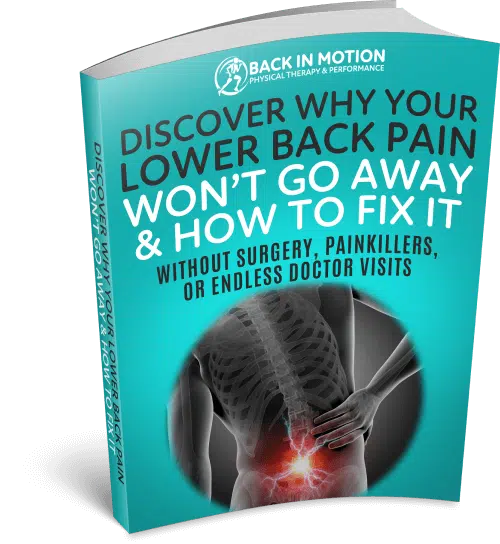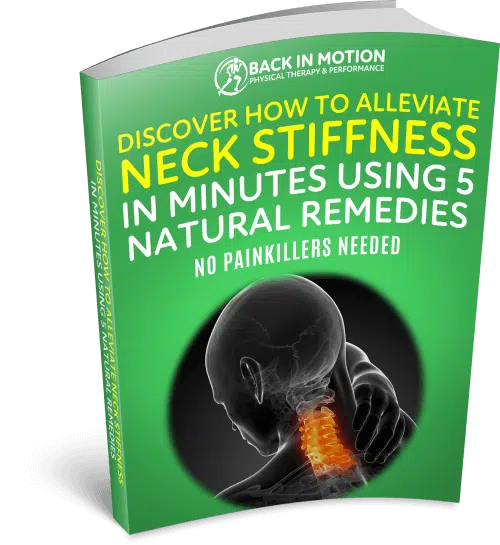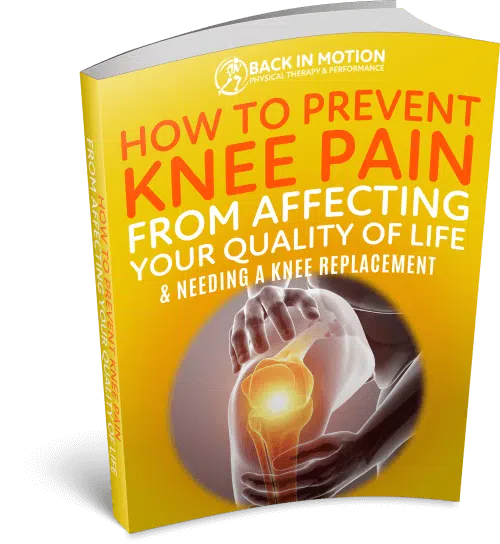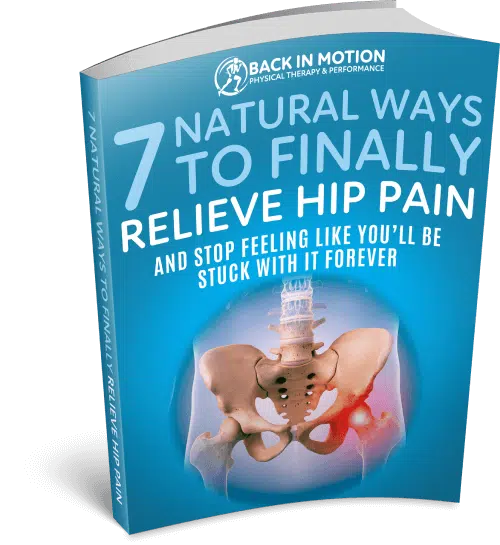The #1 Mistake That Leads to Pickleball Injuries: Ignoring the Root Cause of Pain
Introduction
Pickleball has exploded in popularity over the past decade, drawing millions of new players across the United States and beyond. In fact, according to the Sports & Fitness Industry Association (2023), pickleball participation grew by nearly 159% over three years, making it the fastest-growing sport in the country. Courts are being built everywhere, from retirement communities to public parks, and more people than ever are picking up a paddle.
But with rapid growth comes a new challenge: injuries.
A 2023 study published in the Journal of Emergency Medicine found that pickleball-related injuries treated in U.S. emergency departments more than doubled between 2010 and 2019, with older adults (ages 50+) accounting for the majority of cases (Sheth et al., 2023). The sport's quick pivots, sudden stops, repetitive swings, and explosive movements can take a toll on joints and muscles—especially for adults who may already be dealing with age-related stiffness or weakness.
Yet here's the real issue: the number one mistake most players make isn't playing pickleball itself—it's ignoring the root cause of their pain.
Instead of addressing why an injury is happening, most players simply chase the symptoms: ice an elbow, stretch a sore shoulder, or pop ibuprofen before a match. While these may provide short-term relief, they don't fix the underlying dysfunction that keeps the pain coming back.
This article takes a deep dive into why that mistake is so costly, what science says about the root causes of pickleball injuries, and—most importantly—how to prevent them so you can stay on the court for years to come.
Pickleball's Injury Problem
Who's Getting Injured?
Pickleball has unique demographics compared to other sports. While many younger athletes play recreationally, the fastest-growing group of players are adults over 50 (USA Pickleball Association, 2023). Unfortunately, this is the same group more likely to experience musculoskeletal limitations such as reduced flexibility, lower bone density, and age-related muscle loss (Fragala et al., 2019).
The Most Common Pickleball Injuries
Research and clinical reports highlight the following as the most frequent injuries seen in pickleball players:
- Pickleball Elbow (Lateral Epicondylitis): Similar to tennis elbow, caused by repetitive wrist extension and gripping the paddle too tightly.
- Rotator Cuff Strains & Shoulder Impingement: From overhead smashes and repetitive swinging.
- Wrist Sprains: Sudden impact or awkward paddle positioning.
- Knee Injuries (Meniscus Tears, Patellofemoral Pain): Due to lunges, twisting motions, and stop-start running.
- Ankle Sprains: One of the most common acute injuries from quick side-to-side movement.
- Achilles Tendon Strains or Ruptures: Explosive pushes off the line without adequate warm-up.
- Plantar Fasciitis: Heel pain worsened by poor footwear or repetitive pounding.
- Low Back Pain: Rotational strain, especially in players with limited hip mobility.
What the Data Shows
- Sheth et al. (2023) reported that pickleball injuries among older adults accounted for nearly 90% of fracture-related cases.
- Wolf et al. (2019) found that overuse injuries are the most common, often linked to repetitive stress rather than sudden trauma.
- A meta-analysis by Lauersen et al. (2018) highlighted that strength training can reduce sports injuries by up to 68%, underscoring the preventable nature of many pickleball-related issues.
Section 2: The Symptom-Chasing Mistake
Most players believe that pain originates where they feel it. If their elbow hurts, they treat the elbow. If their knee swells, they ice the knee. This symptom-focused approach may quiet the discomfort temporarily, but it rarely prevents the injury from recurring.
Why Symptom Chasing Fails
The concept of regional interdependence explains why chasing symptoms is ineffective. This clinical model, described by Wainner et al. (2007), shows that pain in one region is often caused by dysfunction in another.
- Elbow pain often comes from weak scapular stabilizers or poor thoracic rotation, forcing the forearm muscles to overwork.
- Knee pain frequently results from hip weakness or limited ankle mobility that alters lower limb mechanics.
- Low back pain is commonly tied to stiff hips or a restricted thoracic spine.
By ignoring these upstream and downstream dysfunctions, players repeatedly treat the wrong area—masking pain instead of fixing its source.
The True Root Causes of Pickleball Injuries
1. Limited Hip Mobility
Hips are the power center for athletic movement. Limited hip rotation increases stress on the knees and spine.
- Evidence: Neuman (2010) explains how hip restrictions force compensatory lumbar spine movements, leading to low back pain.
- Application to Pickleball: During lunges or side steps, poor hip mobility shifts forces into the knee, predisposing players to meniscus or ligament strain.
2. Weak Core and Glutes
Without core stability, the spine and smaller joints absorb forces they aren't built to handle.
- Evidence: Hibbs et al. (2008) found that core stability training reduces musculoskeletal injury risk in athletes.
- Application to Pickleball: Quick reactions, lunges, and paddle swings require a stable base. Weak glutes and abs mean the back and knees overcompensate.
3. Restricted Thoracic Spine Rotation
Most paddle strokes involve trunk rotation. When the thoracic spine is stiff, the body compensates at the shoulder or low back.
- Evidence: Borstad (2006) linked thoracic restrictions to altered shoulder mechanics and impingement risk.
- Application to Pickleball: Reaching for overhead shots with limited rotation stresses the rotator cuff tendons.
4. Age-Related Muscle Loss (Sarcopenia)
Muscle mass declines about 3–8% per decade after age 30, accelerating after 60 (Fielding et al., 2011).
- Impact: Reduced type II muscle fibers impair quick reactions and increase risk of falls or ankle sprains.
- Application to Pickleball: Quick pivots and sudden changes of direction demand fast-twitch response that many older players lack without strength training.
5. Poor Recovery and Load Management
Pickleball is addictive. Many players log multiple hours, multiple days per week—often more than their body can handle.
- Evidence: Lauersen et al. (2018) highlight overuse as a major contributor to injury in older adults.
- Application to Pickleball: Without recovery days, micro-injuries in tendons and joints accumulate until they become chronic.
Research-Backed Solutions for Pickleball Players
1. Warm-Up & Mobility Drills
Skipping warm-ups is a major risk factor for injury.
- Evidence: Dynamic warm-ups improve performance and reduce injury risk (Behm et al., 2016).
- Practical Tip: Perform 5–10 minutes of hip openers, trunk rotations, and dynamic lunges before play.
2. Strength Training
Strength training is the single most effective intervention for injury prevention.
- Evidence: Lauersen et al. (2014) found that strength training reduced sports injuries by nearly 70%.
- Practical Tip: Incorporate squats, deadlifts, glute bridges, and resistance band work 2–3 times per week.
3. Movement Retraining
Correcting faulty patterns reduces stress on vulnerable joints.
- Evidence: Studies show retraining landing and cutting mechanics lowers injury risk in athletes (Hewett et al., 2005).
- Practical Tip: Practice controlled lunges and balance drills off the court.
4. Load Management
The body adapts best to gradual increases in stress.
- Evidence: Soligard et al. (2016) emphasize gradual progression and recovery as essential to preventing overuse injuries.
- Practical Tip: Apply the "10% rule"—don't increase play time or intensity by more than 10% per week.
5. Footwear & Equipment
Shoes and paddles matter more than players realize.
- Evidence: Court-specific footwear reduces risk of ankle injuries (DiStefano et al., 2018).
- Practical Tip: Wear shoes designed for lateral movement, not running. Choose paddle grip sizes that reduce wrist and elbow strain.
6. Flexibility & Recovery
Recovery is as important as training.
- Evidence: Myofascial release and stretching improve mobility and reduce soreness (Cheatham et al., 2015).
- Practical Tip: Incorporate foam rolling and light stretching post-match. Sleep and hydration also accelerate tissue repair.
How the Gray Method™ Is Different
Most clinics treat where it hurts. At Back In Motion, we treat why it hurts.
The Gray Method™ is a science-driven approach that evaluates the entire kinetic chain—hips, spine, shoulders, and more—to identify the weak links behind recurring pain. Instead of chasing symptoms, we fix the root cause.
Example Case:
A 62-year-old pickleball player came in with elbow pain. Instead of focusing only on the elbow, our assessment revealed:
- Limited thoracic spine rotation.
- Weak scapular stabilizers.
- Tight forearm flexors from poor grip mechanics.
By improving thoracic mobility, strengthening the shoulder blade muscles, and retraining his grip, the elbow pain resolved—and he returned to playing without fear of re-injury.
This holistic, root-cause approach is what sets us apart. And it's why so many players are able to continue playing pain-free.
Conclusion
Pickleball injuries aren't just a matter of bad luck. They are the predictable outcome of one critical mistake: ignoring the root cause of pain.
Icing, stretching, and anti-inflammatories may get you through a match, but they don't solve the problem. To stay healthy, mobile, and competitive, you need to:
- Improve mobility in your hips and thoracic spine.
- Build strength and stability in your core and glutes.
- Manage your training load.
- Invest in recovery.
And when pain persists, the smartest move is to get a full-body assessment that identifies why you're hurting—not just where.
That's what the Gray Method™ was built for. It's how we help pickleball players across Fort Myers and Cape Coral not just recover from pain, but perform better than before.
Don't wait until you're sidelined. Fix the cause today—and keep enjoying the game you love for years to come.
References
- Behm, D. G., et al. (2016). Acute effects of muscle stretching on physical performance, range of motion, and injury incidence in healthy active individuals: a systematic review. Applied Physiology, Nutrition, and Metabolism, 41(1), 1–11.
- Borstad, J. D. (2006). Resting position variables at the shoulder: Evidence to support a posture–impairment association. Physical Therapy, 86(4), 549–557.
- Cheatham, S. W., et al. (2015). The efficacy of instrument assisted soft tissue mobilization: a systematic review. Journal of the Canadian Chiropractic Association, 59(2), 200–211.
- Chodzko-Zajko, W. J., et al. (2009). Exercise and physical activity for older adults. Medicine & Science in Sports & Exercise, 41(7), 1510–1530.
- DiStefano, L. J., et al. (2018). Footwear and risk of ankle injuries. Journal of Athletic Training, 53(6), 562–570.
- Fielding, R. A., et al. (2011). Sarcopenia: an undiagnosed condition in older adults. Journal of the American Medical Directors Association, 12(4), 249–256.
- Fragala, M. S., et al. (2019). Strength training for older adults: Benefits, practical strategies, and program prescription. American Journal of Lifestyle Medicine, 13(1), 16–29.
- Hewett, T. E., et al. (2005). Biomechanical measures of neuromuscular control and valgus loading of the knee predict ACL injury risk in female athletes. American Journal of Sports Medicine, 33(4), 492–501.
- Hibbs, A. E., et al. (2008). Optimizing performance by improving core stability and core strength. Sports Medicine, 38(12), 995–1008.
- Lauersen, J. B., et al. (2014). The effectiveness of exercise to prevent sports injuries: a systematic review and meta-analysis. British Journal of Sports Medicine, 48(11), 871–877.
- Lauersen, J. B., et al. (2018). The effectiveness of exercise to prevent sports injuries in adults: A systematic review and meta-analysis. British Journal of Sports Medicine, 52(24), 1749–1756.
- Neuman, D. A. (2010). Kinesiology of the hip: A focus on muscular actions. Journal of Orthopaedic & Sports Physical Therapy, 40(2), 82–94.
- Sheth, S., et al. (2023). Pickleball-related injuries treated in United States emergency departments: 2010–2019. Journal of Emergency Medicine, 64(2), 123–131.
- Soligard, T., et al. (2016). Sports injury and illness incidence in the Rio de Janeiro 2016 Olympic Summer Games. British Journal of Sports Medicine, 51(17), 1265–1271.
- USA Pickleball Association. (2023). Player demographics report.
- Wainner, R. S., et al. (2007). Regional interdependence: A musculoskeletal examination model whose time has come. Journal of Orthopaedic & Sports Physical Therapy, 37(11), 658–660.
- Wolf, B. R., et al. (2019). Injuries in recreational sports: Epidemiology and prevention. Journal of Orthopaedic & Sports Physical Therapy, 49(6), 369–377.









